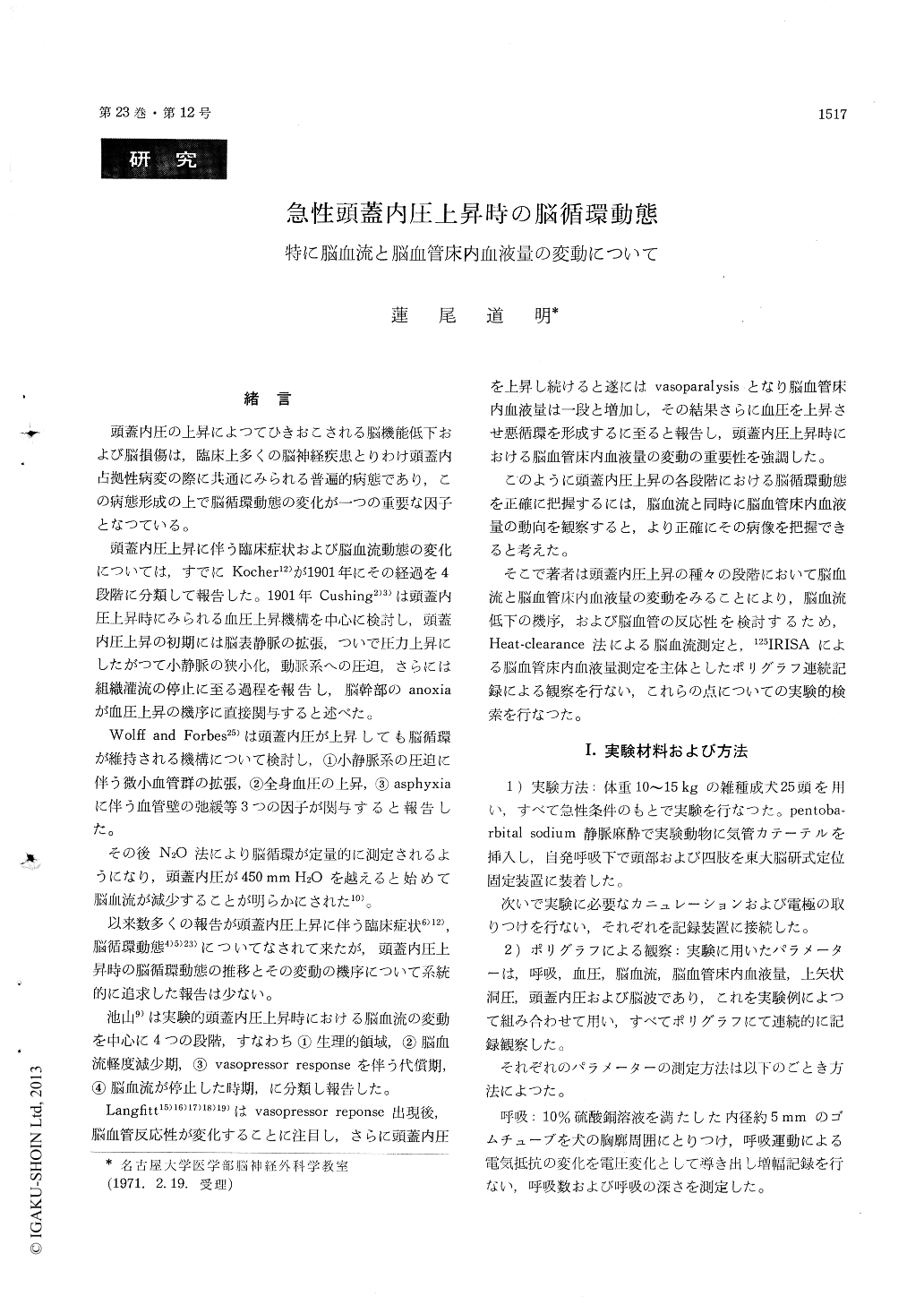Japanese
English
- 有料閲覧
- Abstract 文献概要
- 1ページ目 Look Inside
緒言
頭蓋内圧の上昇によつてひきおこされる脳機能低下および脳損傷は,臨床上多くの脳神経疾患とりわけ頭蓋内占拠性病変の際に共通にみられる普遍的病態であり,この病態形成の上で脳循環動態の変化が一つの重要な因子となつている。
頭蓋内圧上昇に伴う臨床症状および脳血流動態の変化については,すでにKocher12)が1901年にその経過を4段階に分類して報告した。1901年Cushing2)3)は頭蓋内圧上昇時にみられる血圧上昇機構を中心に検討し,頭蓋内圧上昇の初期には脳表静脈の拡張,ついで圧力上昇にしたがつて小静脈の狭小化,動脈系への圧迫,さらには組織灌流の停止に至る過程を報告し,脳幹部のanoxiaが血圧上昇の機序に直接関与すると述べた。
In order to study a change in cerebral hemo-dynamics produced by an increased intracranial pressure, continuous measurements of respiration, blood pressure, cerebral blood flow (CBF), cerebral blood volume (CBV), EEG, intracranial pressure and the pressure in the superior sagittal sinus were recorded on a polygraph.
In this paper, the effect of increased intracranial pressure was studied especially in regard to CBF and CBV on 25 dogs.
Intracranial pressure was elevated in a stepwisefashion by injection of saline through a catheter placed in the cisterna magna.
When the intracranial pressure reached around the level of 500 mm H2O, CBF began to decrease, while CBV showed a slight increase without changes in systemic blood pressure. It was suggested that venous stasis might play an important role in this stage.
Further elevation of the intracranial pressure resulted in the decrease both of CBF and CBV. In this stage, the increased intracranial pressure might act as squeezing the blood from cerebral vessels.
At the stage of vasopressor response, which occurred following further advanced rise in the intracranial pressure, two different types in cerebral hemodynamics were observed dependent on the A-V pressure difference.
When the pressure difference was small, CBF and CBV decreased (Type I), while it was large, both increased (Type II).
Immediately after releasing the intracranial pres-sure to the atmospheric level, there was an abrupt increase in CBF and CBV which exceeded the in-itial value. CBF returned to the baseline level within a few minutes, however, CBV remained elevated.
This prolonged elevation of CBV might show a loss of the autoregulatory mechanism of the cere-bral vessels and might be a cause of cerebral swelling.

Copyright © 1971, Igaku-Shoin Ltd. All rights reserved.


